As an Amazon Associate I earn from qualifying purchases.
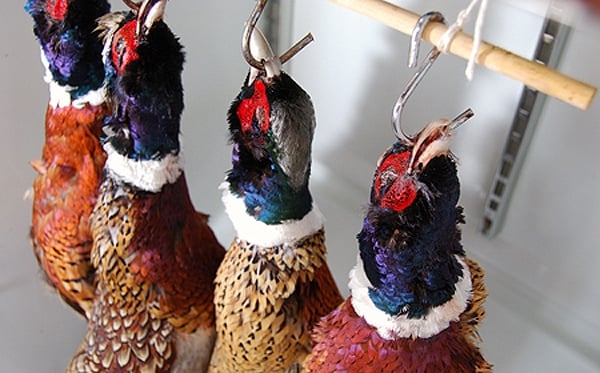
For several years after I began hunting, I recoiled at the idea of hanging game birds. The idea of hanging shot pheasants or partridges undrawn and in the feathers for days and days just did not seem terribly hygienic or sane to me. Old texts wax rhapsodic about the sublime flavor of “high” game, which usually means pheasants and usually means birds that have hung for more than a week. This, I decided, was madness.
I was wrong.
So I took a systematic look at the science of hanging pheasants and other game birds.
Nearly everyone who reads this space would probably agree with me that dry-aged beef is the finest expression of that meat. It is concentrated, savory and tender — and very expensive because dry-aging necessarily means a layer of crusty, slightly moldy ick on the outer edges of the meat. This is cut off before selling or serving.
Hanging beef and venison is important in part because these animals tend to be dispatched at about 18 months to 2 years old — old enough to get a tad tough on the teeth. Think about it: A whitetail buck sporting trophy antlers is likely to be 4 to 7 years old. Conversely, we don’t hang pork because hogs are slaughtered young. Ditto with domestic chickens. Young animals are already tender, so that aspect of aging isn’t needed.
Enter the pheasant. A pheasant really is a “ditch chicken.” It is a close cousin of the domestic chicken and when eaten fresh has, as Brillat-Savarin puts it in his The Physiology of Taste, “nothing distinguishing about it. It is neither as delicate as a pullet, nor as savorous as a quail.”
Those who have eaten fresh pheasant — and by fresh I mean un-hung — can’t help but thinking: “So what? This just seems like a slightly tough and slightly gamy chicken.” They are of course correct, especially with pen-raised birds.
So for my initial experiment I put our four pheasants in the salami fridge, which is set at 55°F. One had a big open spot on it where the breast skin had been ripped, so that bird I plucked after just one day. More on him later.
Off to the library. One of my idiosyncrasies (I have many) is that I collect game cookery books. I have many, and several discuss hanging pheasants.
The great Jean Anthelme Brillat-Savarin doesn’t give a timetable, but says, “the peak is reached when the pheasant begins to decompose; its aroma develops, and mixes with an oil which in order to form must undergo a certain amount of fermentation, just as the oil in coffee can only be drawn out by roasting it.” Sounds pretty hardcore.
Roy Wall wrote in 1945: “The flesh of either wild game or domesticated animals and fowl can certainly be improved by aging, but it is my opinion that there must be a limit to the aging process…aging in the open air for 10 days or a month, according to weather conditions, is, in my opinion, most beneficial to domestic and wild meat alike.”
Don’t freak out. Roy doesn’t specify what game he’s talking about there, and aging an old buck deer in proper conditions for a month isn’t such a crazy idea, although I’d prolly cut it down after two weeks. More recently, Clarissa Dickson Wright — one of the Two Fat Ladies, my favorite TV food personalities — says of pheasant: “Hang it you must, even if for only three days, for all meat must be allowed to rest and mature.” Clarissa’s preference is a week to 10 days.
The current Authoritative Source on All Things Meat is Englishman Hugh Fearnley-Whittingstall, who in his The River Cottage Meat Book says “four or five days would be about right for me” if a bird is hung at 55°F.
This is what the food writers say, but to me that’s only a piece of the puzzle. What about science?

Fortunately science exists on the topic of hanging pheasants and other game birds. My best source is an Australian government publication that did some rigorous experiments. For example:
Pheasants hung for 9 days at 50°F have been found by overseas taste panels to be more acceptable than those hung for 4 days at 59°F or for 18 days at 41°F. The taste panels thought that the birds stored at 59°F were tougher than those held for longer periods at lower temperatures. Pheasants hung at 50°F became more ‘gamy’ in flavour and more tender with length of hanging.
Aha! One issue solved. Food writers rarely talk about temperature of hanging because most of them think about hanging pheasants outside, which is fine if you don’t live in Arizona, Louisiana, Texas or California; even in autumn it is often too warm to properly hang game. It seems 50°F is ideal, and the 55°F my fridge is set at is acceptable.
Furthermore, an English study from 1973 found that clostridia and e. coli bacteria form very rapidly once you get to about 60°F, but very slowly — and not at all in the case of clostridia — at 50°F.
That same study found that field care of the birds is vital. Under no circumstances should you allow pheasants to pile up in warm conditions because doing so will slow cooling so much that the dead birds will develop bacteria in their innards. This is no bueno.
All the bacteria and taste tests converge on two things: 50 to 55°F and 3 to 7 days. That’s your takeaway, folks.
Left undiscussed is the importance of feathers and innards. Brillat-Savarin speaks about a mysterious “oil,” and Wall talks about bacterial decomposition. Here’s my take: The feathers provide protection for the skin against drying out during aging. Pluck the feathers right away and you can still age the bird, but the skin will be unacceptably dried out and unusable.
As for the guts, I am on the fence here. I think they do add something: Fish guts will affect the fillets because of the animal’s digestive enzymes. No reason to think land animals aren’t the same way, although at 50 to 55°F this is going to take some time to develop — for what it’s worth, a pheasant’s body temperature runs about 105°F.
Yet, when I plucked and gutted my experimental pheasants I noticed two things: One, they were pretty dry inside, and two, the innards in three of the four birds looked fine and wholesome, not ratty and stinky. Maybe this je ne sais quoi does not appear until later.
All of which brings me to my own experiments with hanging pheasants. Like I mentioned before, I had one damaged bird I let hang for only a day. This bird’s body was drier and tighter than a fresh-killed bird, and I dry-plucked it because of the damage.
This pheasant went into a pheasant and pork pie, which turned out to be an outstanding dish. Hat tip to Fergus Henderson for the inspiration on this one. How was the pheasant? I noted two things: One, the bird browned better (less moisture?), and it was more flavorful — even after just one day.
That left three birds. I plucked the next one at three days. This is the beginning of the sweet spot in the Australian study. I noticed that this bird was pretty limp, but there was no bad smell and the fat and giblets looked pristine. I was, honestly, pretty shocked. I jointed this bird because that’s what I do with most pheasants; the legs and thighs always need more time than the breast.
The aging really came into play with the breast. It was soft, not unpleasantly so, but definitely less firm than the day-old bird or a fresh one. Then it hit me: These pheasants were pen-raised and had only been wandering around wild for days or weeks (months at the most). They were all young birds. I had originally planned to leave one bird for a full week, but scotched that idea immediately. I plucked the next two birds at 3 1/2 days and 4 days. I kept both whole.
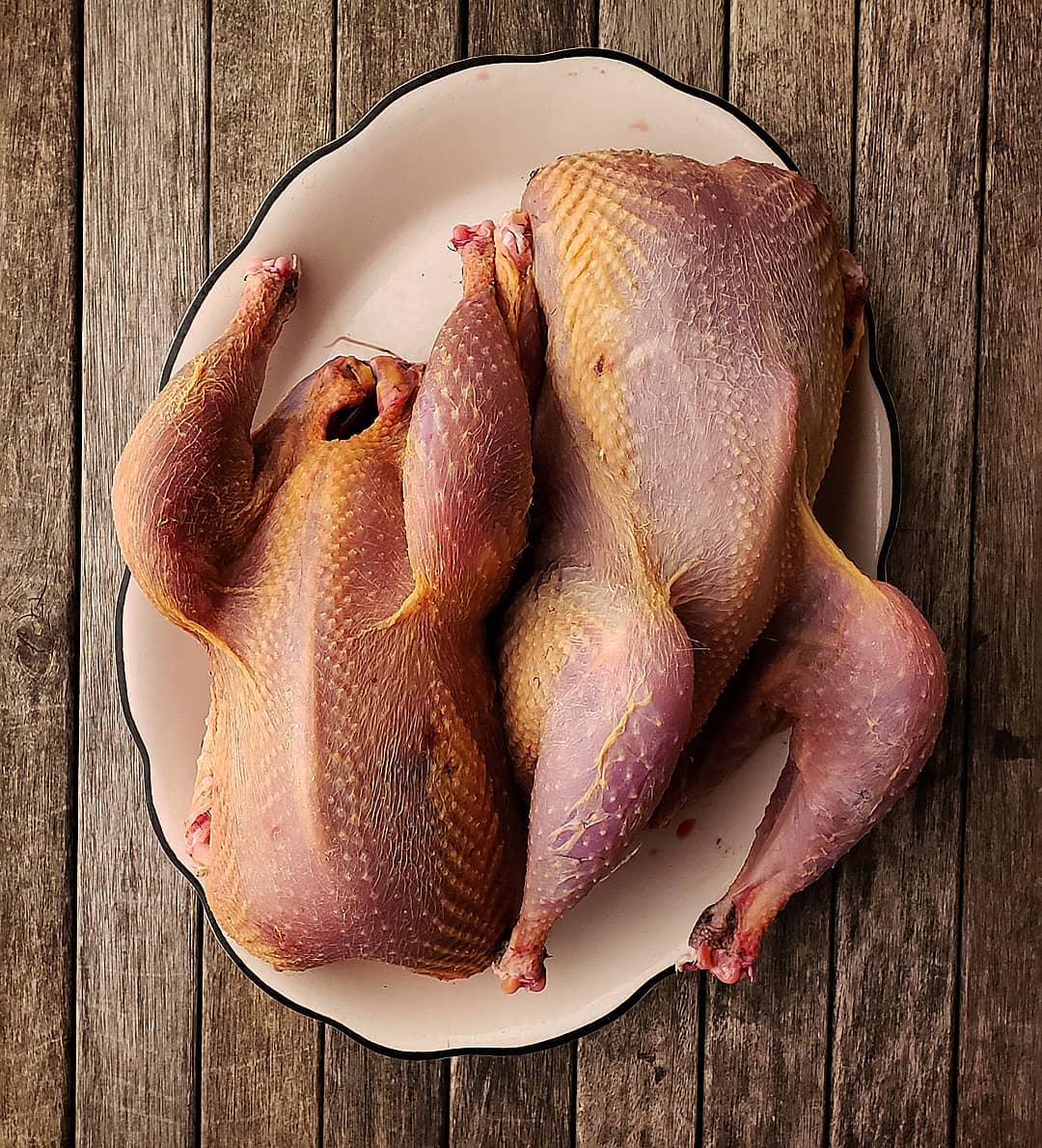
I’ve since done experiments on old roosters and they can be successfully aged for a full week. In fact, if you get an old, wild pheasant, 3 days would be a minimum for proper aging.
This of course with other game birds. Over the years I’ve come to these conclusions on hang time:
- Pheasants, grouse, partridges, turkeys and geese I will hang 3 to 7 days, depending on how old they were. If you hang turkeys or geese you must eviscerate them, as they retain too much heat otherwise.
- Pen-raised pheasants, all quail, woodcock, snipe and ducks I only age 1 to 3 days, again, depending on size and age. The smaller the bird and the younger the bird, the shorter the hang time.
And, to be honest, I rarely age my waterfowl this way anymore. If I want to age them, I do so in the fridge. The problem with ducks and geese is their down: It causes the birds to retain heat too long, and I end up getting a bit of gangrene on their butts, which is no bueno.
A few things you should know. Don’t try to wet-pluck an aged game bird as I instruct you to here. You must dry-pluck these birds because the skin gets looser and scalding did not seem to help one bit with the feathers. It was a major bummer to scald one bird and rip some of the skin. Dry-plucking, you should be warned, sucks. It takes forever, but is worth it for the results.
To eat the giblets or not? I’d say go for it for birds up to three days, if they have not been shot up. Any sign of ickiness in the innards and toss them at once. One way to tell if you are unsure is to render the fat the way you would with a duck. If it stinks, toss it.
So, to wrap up, here’s what I found:
- Keep your birds as cool and as separate as possible in the field. Use a game strap, not the game bag in your vest. Separate your birds in the truck or put them in a cooler — do not get them wet!
- Hanging your birds by the neck or feet does not matter, as several studies has shown.
- Hang upland birds between 50 to 55°F for at least three days, up to a week with an old rooster. Old roosters will have horny beaks, blunt spurs and feet that look like they have been walked on for quite some time. They will also have a stiff, heavy keelbone. Hen pheasants only need 3 days.
- Do not hang any game birds that have been gut-shot or are generally torn up. Butcher these immediately and use them for a pot pie.
- Dry-pluck any bird that has hung for more than 3 days.
- Wash and dry your birds after you pluck and draw them. Only then should you freeze them.
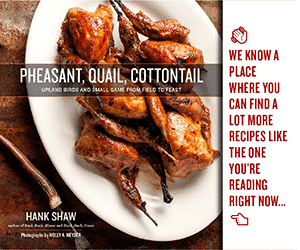
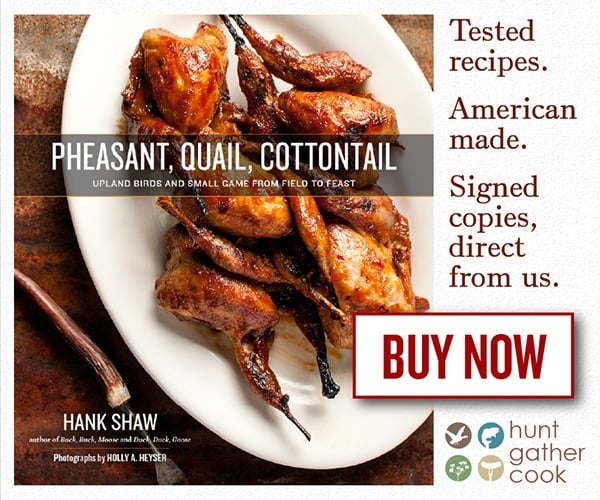
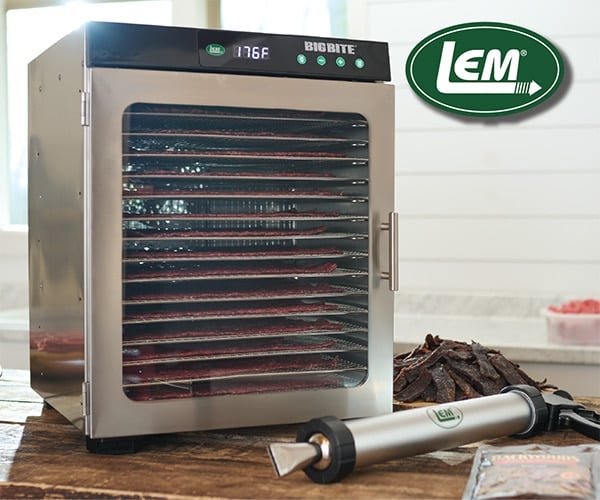
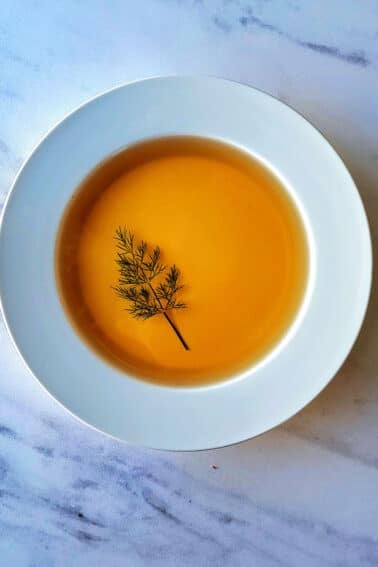


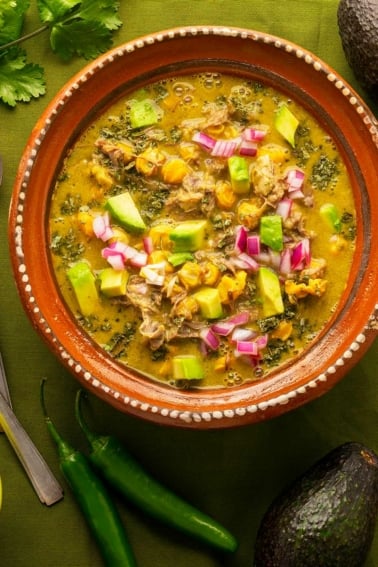
Hey There,
Is there a sure-fire way to see if the bird is gut shot before hanging?
Great site, thanks for the tips!
Mike
Mike: No, but a “pretty sure fire” way is to feel around the vent/tail section for blood.
Hello.
Is there a difference between hanging a pheasant in a refrigerator versus simply lying it on its side in the fridge?
Thank you.
Dan: Airflow is better if you hang. Lying it on its side is OK, but hanging is better. Lying them on a rack rather than a shelf in the fridge is a good compromise.
I’m aware this is an old thread but it’s been amazingly informative. Our GWP dog has caught a pheasant (without shot) has a couple of deeper teeth marks around the neck and broken the skin, obviously! 🙂
Just wondering what your opinion is with this? At the moment it’s only 9c in England so should be fine, was cooled straight away and has begun hanging 45mins after death. Just wondering if it’s a good idea to still hang with open wounds on the meat and no feathers?
Monty: Should be fine.
I went pheasant hunting today and we saved two of the birds whole to roast. My hunting partner has them in an electric cooler that is at 51F. However, the birds are just lying in the cooler. Everything I have read refers to hanging but I haven’t found anything (maybe haven’t looked far enough) that explains why you hang rather than just laying the birds down. I did find a reference to preventing blood pooling but that was all. At the moment we don’t have a good option for hanging (unseasonably warm weather in Northern Virginia this weekend) but I will try to rig something up in the cooler if we are in danger or ruining the birds by having them just lying in the cooler.
Thanks for the advice. My daughter just got home from University, an old converted Agricultural College in rural England, with 3 brace of pheasant. My dad’s preferred hanging time, in a cool outhouse, was ‘until their bum-holes turn blue’. That always seemed a bit too far out for me. I’ll try your recommendation of 3-7 days.
Cheers
Hi Hank:
You may have a convert here in Alberta, Canada. My Dad always hung grouse and ducks in the Back Kitchen (old farmhouse summer kitchen) for 4 or 5 days. He said they should almost fall off the hook before cooking. I never did hang my pheasants but I will try this out. I go for wild pheasant in Dec and January here in southern Alberta; released birds in Sept
Hi Hank – very informative – thank you. Let me ask, do you feed the fowl only water for a few days prior to harvesting? And – is there any method of harvesting that is desired over others? Last – do you bleed the bird out? I raise Muscovy and am ready to harvest a few younger drakes. I am going to hang them because I’ve heard too many times about how much better the meat will be. We’re about to have a few days of really cold weather so I’m ready to give it a try. Thanks for any additional information you can provide on this.
BTW, have you ever heard of anyone doing this with rabbit?
Connie: I am not a farmer, so I wouldn’t know. I hunt wild pheasants. And yes, people hang rabbits. But the innards will be very stinky. I don’t generally hang them because of this.
I don’t have space to hang my fall turkey in a controlled environment. It’s hanging in the garage now, and the next week temperatures will fluctuate from below freezing to low forties here in Minnesota. Is this freeze-thaw cycle ok for hanging game?
Luke: I’d go ahead and pluck the turkey. I also gut turkeys when hanging them, because they are so large they hold enough internal heat to sour them.
I dont h e anywhere suitable at the stated temperature. I have had an un-plucked pheasant in a cooler at 3 degrees for 10 days now (just not had the time) will it still be edible once prepared ?
Paul: 10 days is a long time. But 3C is pretty cold, so it’s worth a shot.
What about rabbits?
Thanks for the great article! So for wild turkeys you would gut but not defeather and then hang 3-5 days at 50-55*F, correct?
Hi Hank. Yeah, so I’ve just been corrected! I guess I’ve just never seen them. I’m from S.F. (no pheasants there) but live in the East Bay – Oakland. Where might I spot pheasants around here? Not being a hunter, I guess I’m just out of the loop. Thanks for the additional info.
Sharon: Closest pheasants to you would be rural Yolo County, I bet.
Wow! What a treasure trove of information! I’m a California gal who married into a family with a Nebraska in-law. Got many pheasants transported back to me in a cooler from the plains. Even being a professional chef, I had no idea what to do with all that tough white meat, and didn’t much like it. (We don’t have pheasants here in the Golden State.) Then I read in a cook book that my mother-in-law gave me, instructing that pheasant has to be “hung” before eating. Huh? No one ever told me this before. I’ve never hunted and my in-laws are not gourmet cooks. Thanks so much for pointing me in the right direction. Now that I think of it, when I lived in Paris, France, I remember seeing whole, unplucked pheasants hanging in butcher shops for sale. Now it all makes sense. Next time I’m visiting back on the plains, I’ll make good use of the cold barn for hanging pheasants that the neighbors shoot and share with us. So glad I found this website. Much obliged! Sharon
Sharon: We have plenty of pheasants here in NorCal. I live here. 😉
I just shot my first goose, it definitely was headshot, but I’m worried I got a little bile on the inside while I was cleaning it. I’m sure this happens a lot and is fine, I bet I’ve done it with the occasional turkey, squirrels, pheasants, grouse, deer, etc and just never noticed it.
I’m a little paranoid about aging it now though. The inside looks pretty clean, and it’s a small lesser, maybe 8 lbs. My plan is to let it freeze for a few hours outside while its cavity is propped open, then hang it in my garage (around 45-50 degrees) before I go to bed. 3 days should do it.
Thoughts on this? I’d appreciate it if you could just say I’m being paranoid so I can enjoy this bird 😉
Tom: You are being a bit paranoid. 😉 Seriously, you’re in good shape. Do not let the bird freeze, however. Keep it cold, but not frozen. Three days should be fine.
Thanks for the speedy reply! They turned out clean-fatted and beautiful.
Hi Hank, my husband shot a couple of truly gigantic Canada geese this morning and I’ve been flipping through your books & blog posts trying to figure out a couple of things. Any chance you could shed a bit of light on the following?
– Sounds like for Canada geese, you advise eviscerating and then hanging. I got the impression that by this you mean eviscerating with feathers still on, though, and it seems like it’s nigh impossible to pluck *after* gutting — so do you advise skinning the birds post-hang, or pluck *and* eviscerate pre-hang, or is there in fact a way to pluck post-evisceration I’ve just missed? (We’ve been dry-plucking; I find it weirdly pleasant and restful work.)
– From what you’ve written, Canada geese can vary hugely when it comes to skin-and-fat quality. We don’t know yet whether we’ve got a delicious couple of birds we should for sure pluck so we can keep all that tastiness intact (fingers crossed, because I BADLY want to try for that goose-neck sausage), or whether we’ve got something fishy we should just skin for sausage. Should I hang ’em _either way_ since it’ll develop the flavor of the meat regardless, and then figure out the fishy factor once I take them down? or would your recommendations about hanging not apply to a fishier bird?
Many thanks for the work you do — your blog, videos, and cookbooks have been completely invaluable to my husband & I in our very first hunting season. You’ve make a really daunting venture for a couple of Bay Area city kids into something genuinely accessible. Thanks to you we even pulled off an exquisite coot stew, and we’ve been buying your books as holiday gifts for hunting friends because your approach has been so hugely helpful for us. (If you have a mailing address you’re comfortable posting, we’ll ship you a bag of our latest batch of chocolate-covered salted caramel bay nut brittle as a token of our appreciation!)
Jericha: Honestly, I would go ahead and start plucking. Chances are the fat will be OK, and if you want those goose neck sausages that’s the way to do it.
What is the risk of not eviscerating a Canada Goose prior to aging? I’ve not ever done that and 3-5 days later eaten the gizzard, heart, and liver. I do discard them if they got shot. But I would like to understand what risk I’m running in aging them in about 40-45 degree (or lower sometimes) inside my garage (it’s been a mild winter so far) in Northern IL.
Dave: They are too large to hang without eviscerating, unless you are talking about the small subspecies. I always eviscerate my larger geese before hanging.
A little confused on your direction for aging geese. Your “Cooking Canada Geese” says leave feathers and guts on/in. This post says to eviscerate geese because of the down. What am I missing, or was this a matter of changing your mind over time? If so what is your current stance?
Andrew: Thanks for that catch. This information is newer and better. Eviscerate geese if you are aging them more than a day or so.
Do you hang/age rabbits and squirrels also?
Peter: Rarely. But the English do.
Hank, you claim that hanging by the neck or feet makes little difference – I disagree, it makes all the difference. I have been shooting for over 50 years and my grandfather was involved in the Royal estate at Sandringham. He always hung birds by the feet. Below is an extract of an article I wrote for a shooting magazine here in the UK a few years ago. “For most of us the icing on the cake after a days shoot is to be presented with a brace of birds in feather. For a few however, it is a nightmare because they or their wife do not know what to do with them.
The birds will undoubtedly be presented tied at the neck, as this is the easiest and quickest way to ‘brace’ them on the shooting field. The first thing to do when you get home is to re–tie them by the leg and hang them head down. The logic goes like this – the birds need to cool quickly so if tied by the leg the feathers naturally fall outwards allowing air to circulate. Secondly, when hung by the leg the intestines fall into the chest cavity and the ribcage keeps it separate from the flesh. However, when hung by the neck everything falls down and if ruptured by shot sours the meat around the vent, which taints it green and imparts a bitter “well hung, gamey” flavour. Hung properly the meat is sweet and succulent with a delicate but distinctive flavour.
Like all meat game birds need to be hung to help tenderize the meat through enzymic and bacterial action. The question is “for how long?” The short answer is an absolute minimum of 24 hours but at least 3–4 days in warm weather, e.g August grouse and September partridge and 5–7 days for pheasant shot in October onwards when it gets colder. In very cold weather allow two weeks.
Keith: Your experience is sound, but I am quoting the science. I’ve read any number of papers on this topic, most from the UK, and they say it makes no difference. But I’ll be honest: I’ve never tried hanging from the feet, as it’s easier for me to do it by the head. I’ll try the feet with my next pheasants and see if I can tell the difference.